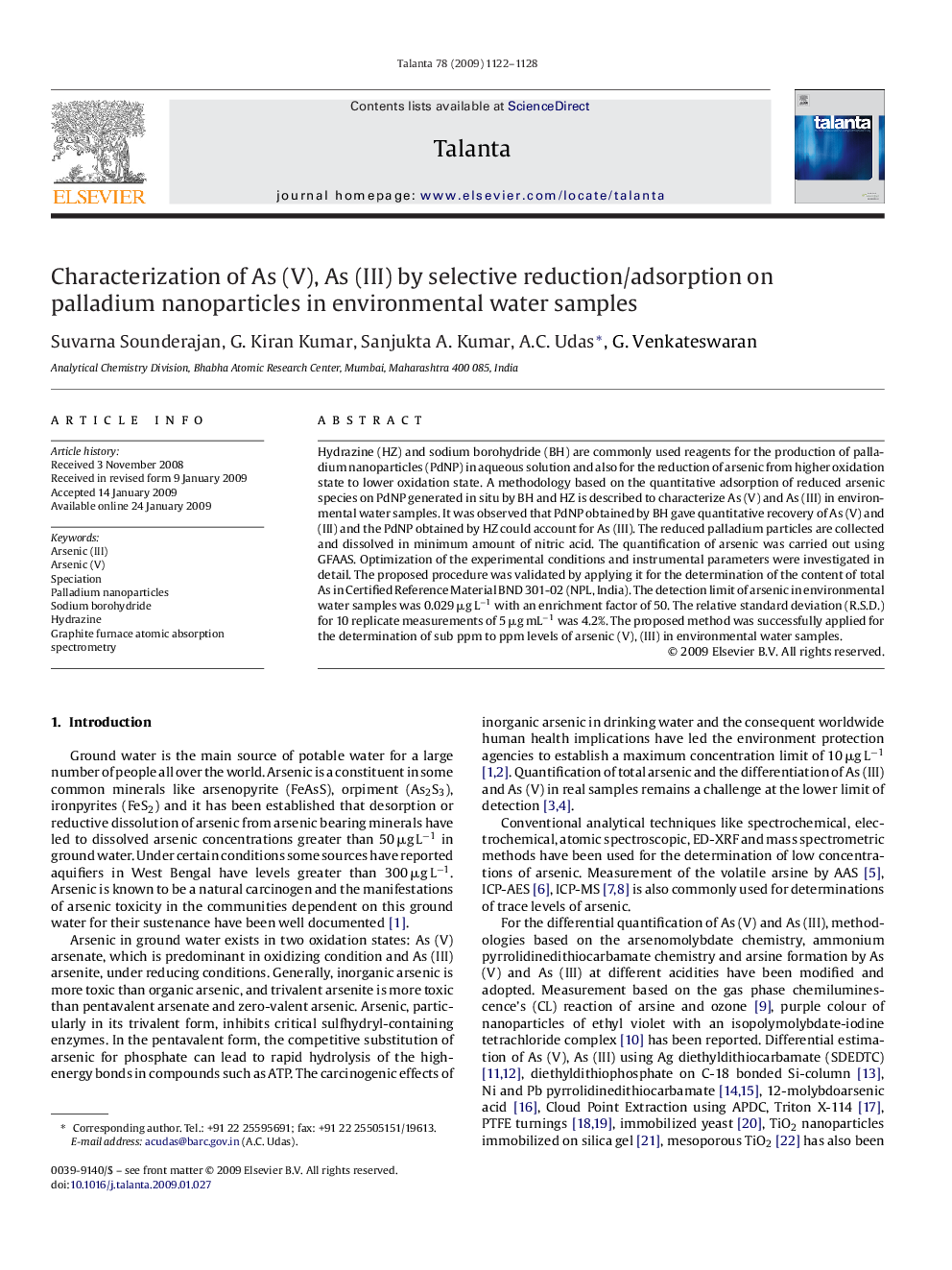| Article ID | Journal | Published Year | Pages | File Type |
|---|---|---|---|---|
| 1244955 | Talanta | 2009 | 7 Pages |
Hydrazine (HZ) and sodium borohydride (BH) are commonly used reagents for the production of palladium nanoparticles (PdNP) in aqueous solution and also for the reduction of arsenic from higher oxidation state to lower oxidation state. A methodology based on the quantitative adsorption of reduced arsenic species on PdNP generated in situ by BH and HZ is described to characterize As (V) and As (III) in environmental water samples. It was observed that PdNP obtained by BH gave quantitative recovery of As (V) and (III) and the PdNP obtained by HZ could account for As (III). The reduced palladium particles are collected and dissolved in minimum amount of nitric acid. The quantification of arsenic was carried out using GFAAS. Optimization of the experimental conditions and instrumental parameters were investigated in detail. The proposed procedure was validated by applying it for the determination of the content of total As in Certified Reference Material BND 301-02 (NPL, India). The detection limit of arsenic in environmental water samples was 0.029 μg L−1 with an enrichment factor of 50. The relative standard deviation (R.S.D.) for 10 replicate measurements of 5 μg mL−1 was 4.2%. The proposed method was successfully applied for the determination of sub ppm to ppm levels of arsenic (V), (III) in environmental water samples.
